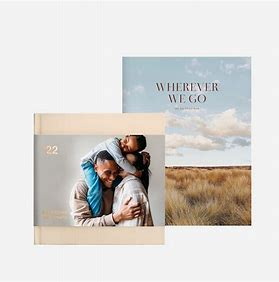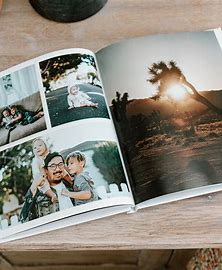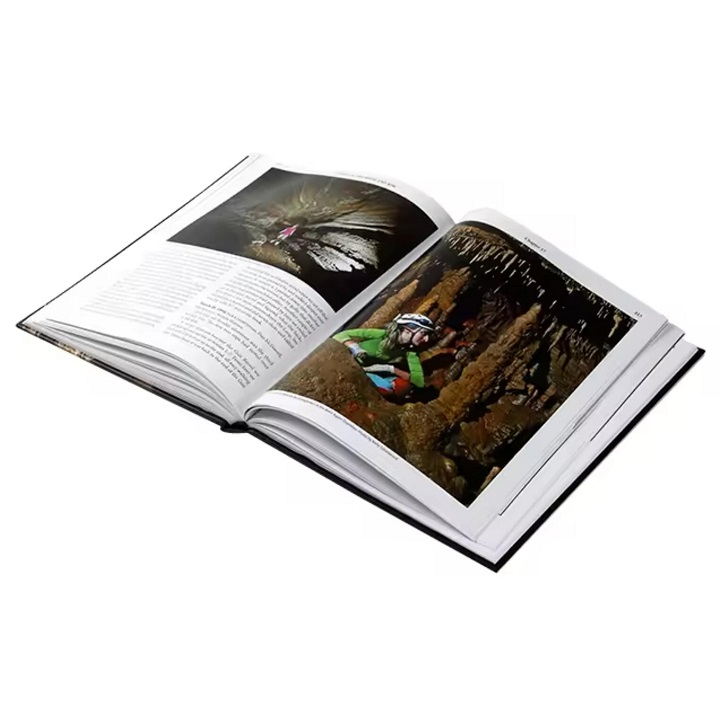Content Menu
● Understanding the Purpose of Your Photo Book
● Choosing the Right Format
● Selecting Your Photos
● Designing Your Layout
● Choosing a Printing Service
● Finalizing Your Photo Book
● Binding Options
● Adding Personal Touches
● Sharing Your Photo Book
● Conclusion
● Related Questions
>> 1. What materials do I need to create a photo book?
>> 2. How long does it take to make a photo book?
>> 3. Can I create a digital photo book?
>> 4. What should I do if I don't have enough photos?
>> 5. Is it expensive to print a photo book?
Creating your own photo book is a rewarding way to preserve memories, celebrate special occasions, or even showcase your photography skills. In this comprehensive guide, we will explore the steps involved in making a personalized photo book, from selecting the right materials to printing and binding your creation. Whether you want to create a family album, a travel diary, or a portfolio of your work, this article will provide you with the knowledge and inspiration needed to get started.

Understanding the Purpose of Your Photo Book
Before diving into the creation process, it is essential to define the purpose of your photo book. Understanding why you want to create it will guide your choices throughout the project. Here are some common purposes for photo books:
- Family Memories: Capturing milestones like birthdays, holidays, and family gatherings.
- Travel Adventures: Documenting trips and experiences in various locations.
- Special Events: Celebrating weddings, anniversaries, or graduations.
- Hobbies and Interests: Showcasing photography skills or artistic projects.
- Personal Projects: Creating a narrative or theme that reflects your journey.
By clarifying the purpose of your photo book, you can better decide on the style, layout, and content that will resonate with you and your audience.
Choosing the Right Format
Once you have established the purpose of your photo book, it's time to choose the format. The format will dictate the size, layout, and overall design of your book. Here are some popular formats to consider:
- Hardcover: Offers durability and a professional look; ideal for keepsakes.
- Softcover: Lighter and more flexible; suitable for casual projects.
- Layflat: Allows images to span across two pages without a crease; great for panoramic photos.
- Digital: An online version that can be shared via email or social media.
Consider how you plan to use the book when selecting the format. For example, if it's a gift for someone special, a hardcover might be more appropriate.
Selecting Your Photos
The heart of any photo book is its images. Begin by gathering all potential photos that fit your theme. Here are some tips for selecting photos:
- Quality Over Quantity: Choose high-resolution images that are clear and well-composed.
- Variety: Include a mix of wide shots, close-ups, candid moments, and posed pictures to create visual interest.
- Storytelling: Select images that tell a story or convey emotions related to your theme.
- Editing: Consider editing photos for brightness, contrast, or color adjustments before including them in your book.
Once you have selected your photos, organize them in chronological order or by category based on how you want to present them.
Designing Your Layout
Designing the layout of your photo book is where creativity comes into play. Here are some key considerations:
- Page Count: Determine how many pages you want in your book based on the number of photos and content.
- Templates: Many online platforms offer templates that can simplify the design process. Choose one that aligns with your theme.
- White Space: Don't overcrowd pages; leave space around images for a clean look.
- Text Elements: Consider adding captions or short descriptions to provide context for each image.
Experiment with different layouts until you find one that feels right for your project.

Choosing a Printing Service
After finalizing your design, it's time to choose a printing service. Look for services that offer high-quality prints and various customization options. Some popular online printing services include:
- Shutterfly
- Mixbook
- Blurb
- Snapfish
When selecting a service, consider factors such as pricing, turnaround time, shipping options, and customer reviews.
Finalizing Your Photo Book
Before sending your photo book off for printing, take time to review everything carefully. Here's what to check:
- Spelling and Grammar: Ensure all text is error-free.
- Image Quality: Double-check that all images are high resolution and properly cropped.
- Layout Consistency: Make sure all pages have consistent margins and alignments.
Once you're satisfied with every detail, proceed with placing your order.
Binding Options
If you're creating a physical photo book rather than using an online service, consider binding options available to you:
- Saddle Stitching: A simple method where folded sheets are stapled together; best for thinner books.
- Perfect Binding: Pages are glued together at the spine; suitable for thicker books.
- Spiral Binding: Allows pages to lay flat; ideal for cookbooks or manuals.
Choose a binding method that complements your design and intended use.
Adding Personal Touches
To make your photo book truly unique, consider adding personal touches such as:
- Handwritten Notes: Include personal reflections or anecdotes alongside photos.
- Decorative Elements: Use stickers, washi tape, or other embellishments if creating by hand.
- Themed Backgrounds: Choose backgrounds that enhance the theme of each page without overpowering the images.
These elements can add depth and personality to your project.
Sharing Your Photo Book
Once completed, think about how you want to share your photo book:
- Gifts: Present copies to family members or friends as heartfelt gifts.
- Social Media: Share digital versions on social media platforms or through email newsletters.
- Events: Showcase it at family gatherings or special events.
Sharing allows others to appreciate your work while also preserving memories in a tangible form.
Conclusion
Creating your own photo book is an enjoyable process that allows you to express creativity while preserving cherished memories. From selecting photos and designing layouts to choosing printing services and adding personal touches, each step contributes to crafting a unique keepsake that tells your story.
By following these guidelines and infusing personal flair into your project, you'll create a beautiful photo book that can be treasured for years to come.

Related Questions
1. What materials do I need to create a photo book?
You will need high-quality images (digital or printed), design software (or online templates), binding materials (if making by hand), and possibly decorative elements like stickers or washi tape.
2. How long does it take to make a photo book?
The time required varies based on complexity but generally ranges from several hours to several days depending on design choices and how many photos you're including.
3. Can I create a digital photo book?
Yes! Many online services allow you to create digital versions of photo books that can be shared online without printing physical copies.
4. What should I do if I don't have enough photos?
Consider using themed graphics or illustrations related to your topic as filler content between photos or focus on storytelling through fewer but more meaningful images.
5. Is it expensive to print a photo book?
Costs can vary widely based on factors such as size, page count, binding type, and printing service chosen. It's best to compare options before deciding.
































